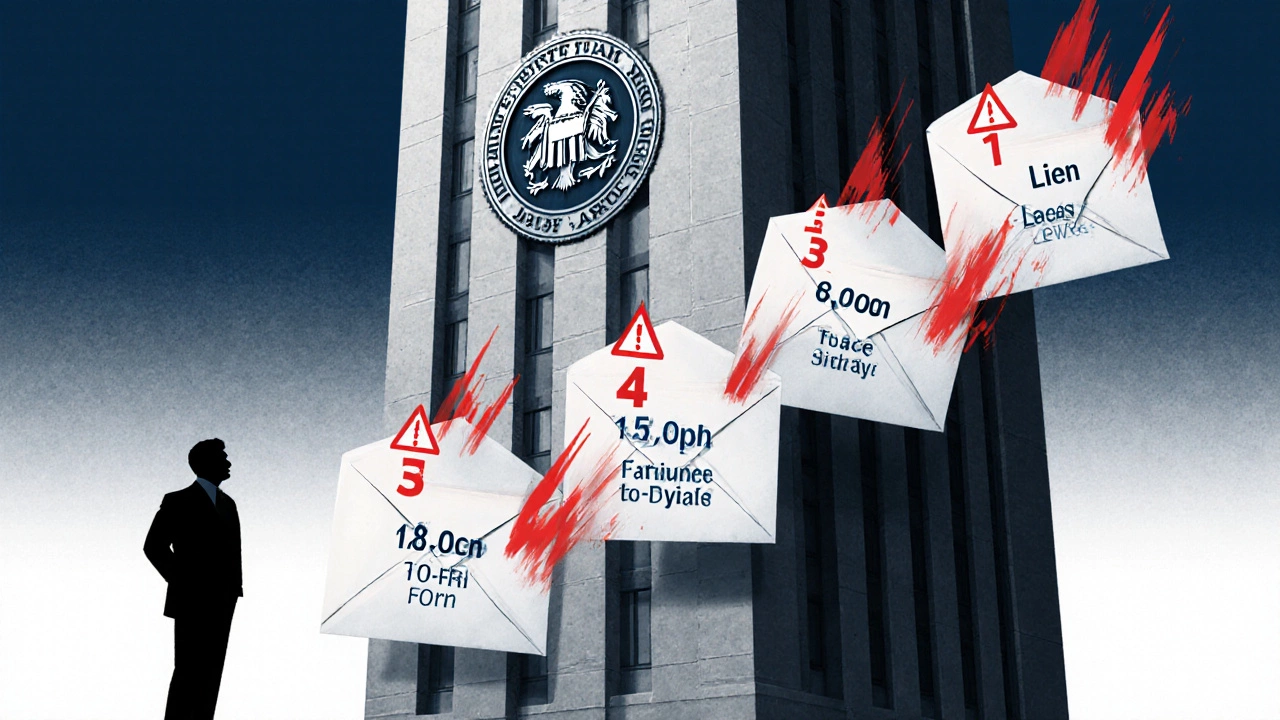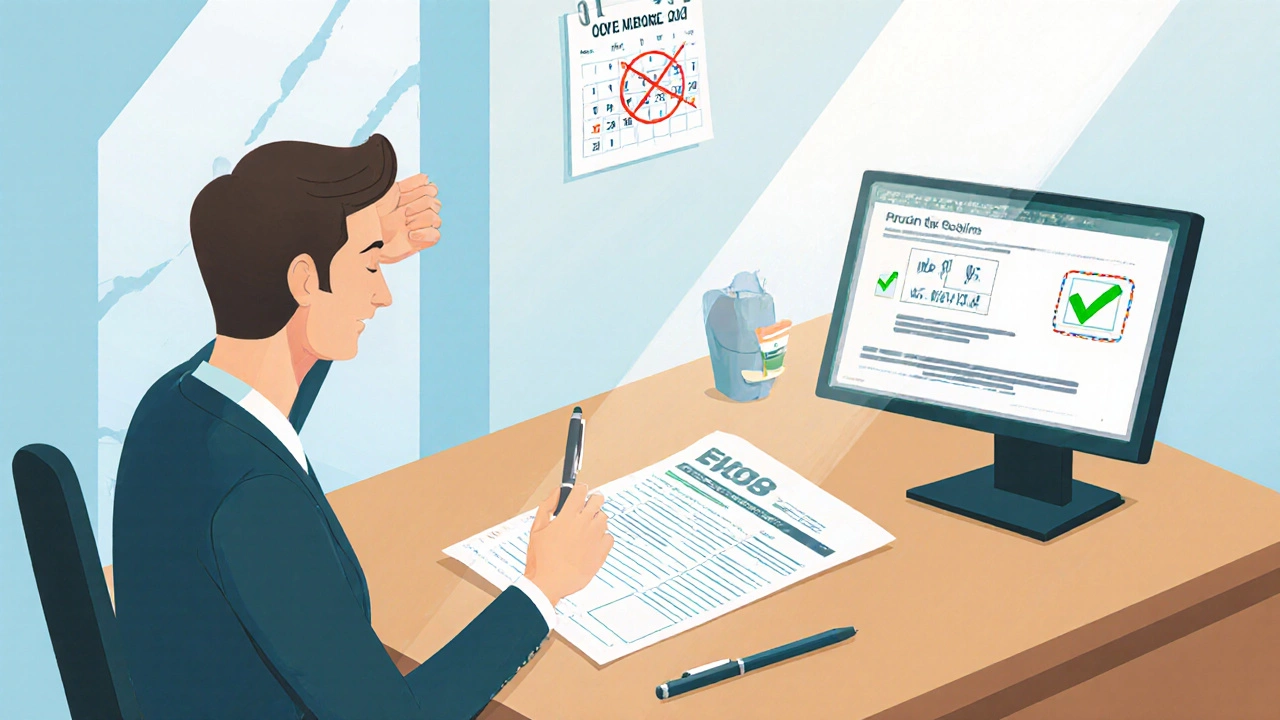Business Tax Filing Timeline Calculator
Penalty Breakdown
Enforcement Timeline
Running a company means juggling sales, employees, inventory and-yes-taxes. One question that pops up more often than you’d think is: how many years can a business go without filing taxes? The short answer is: none. The moment a tax return is missed, the clock starts ticking on penalties, interest, and possible enforcement actions. This guide walks you through the real timeline, the costs you’ll face, and the steps to get back on track before the situation spirals.
What Triggers the Deadline?
When a business an organization that sells goods or services for profit earns income, the Internal Revenue Service (IRS the U.S. federal agency that collects taxes and enforces tax law) expects a tax return for each fiscal year. The filing due date depends on the entity type:
- C‑Corporations: April 15 of the following year (or October 15 with a six‑month automatic extension).
- S‑Corporations and Partnerships: March 15 of the following year.
- LLCs taxed as sole proprietorships: April 15, same as individuals.
If you miss that date, the IRS doesn’t wait for you to catch up. It begins assessing penalties the day after the deadline.
The First Penalty: Failure‑to‑File
The failure‑to‑file penalty a charge equal to 5% of the unpaid tax for each month the return is late, up to 25% is the most aggressive. It applies even if you owe no tax yet; the penalty is based on the amount you should have reported.
Example: Your LLC earned $100,000 in 2023 and should have reported $22,000 in federal tax. File the return two months late, and the penalty is 5% × 2 = 10% of $22,000, or $2,200.
Interest and the Failure‑to‑Pay Penalty
While the failure‑to‑file penalty climbs each month, the failure‑to‑pay penalty a 0.5% charge on the unpaid balance each month, up to 25% runs simultaneously. On top of that, the IRS adds interest, calculated daily based on the federal short‑term rate plus 3 percentage points.
Even if you file on time but can’t pay, you’ll still see the 0.5% monthly charge stack up. Paying early cuts both penalties and interest dramatically.
State Taxes: A Parallel Timeline
Most states mirror the federal schedule, but they enforce their own penalties. For example, California imposes a 5% penalty for returns more than 60 days late, plus 0.5% per month of unpaid tax. New York adds a 0.5% monthly surcharge similar to the IRS.
Because state agencies can levy liens, levy bank accounts, and even suspend business licenses, ignoring state filings can shut your operation down faster than a federal audit.

How Long Before the IRS Takes Enforcement Action?
The IRS doesn’t wait years before acting. Here’s a typical timeline after a missed deadline:
- Day 1-30: Notice of failure‑to‑file and demand for the return.
- Day 31-90: Second notice, added penalties, and a warning of possible levy.
- Day 91-180: The agency may issue a Notice of Federal Tax Lien, which clouds the business’s credit.
- Day 181-365: Levy authority can be exercised-bank accounts frozen, assets seized, or payroll withheld.
- Beyond 1 year: The case may be referred to the Tax Enforcement Center for more aggressive collection, including court actions.
In practice, many small businesses feel the pressure within the first six months. Waiting two or three years dramatically raises the odds of a lien or levy.
Can You Get an Extension After Missing the Deadline?
Yes, but it’s a reactive move, not a shield against the penalties that have already accrued. To request an extension a formal request to the IRS to postpone the filing deadline, usually granted for an additional six months, you file Form 7004 (for corporations) or Form 4868 (for sole proprietors). The extension only delays the filing deadline; it does NOT waive penalties for the period you were late.
If you also need more time to pay, you can submit a installment agreement a payment plan with the IRS allowing you to pay the tax owed over time. The IRS may grant it if you demonstrate reasonable cause and ability to pay.
Step‑by‑Step: Getting Out of the “No‑File” Hole
- Gather Records: Pull bank statements, sales invoices, payroll reports, and expense receipts for the missing year(s). Accounting software like QuickBooks popular cloud‑based bookkeeping platform can auto‑populate many fields.
- Prepare the Return: Use the appropriate IRS form (1120, 1120‑S, 1065, or 1040‑Schedule C). Even if you estimate numbers, filing a return is better than none.
- File Electronically: The e‑file system validates data on the spot, reducing the chance of rejections.
- Attach an Explanation: Include a brief statement of “reasonable cause” (e.g., natural disaster, severe illness, or accountant turnover). The IRS often reduces penalties when you can prove circumstances beyond your control.
- Pay What You Can: Send a payment for the estimated tax due. If you can’t cover the full amount, set up an installment plan.
- Monitor Notices: Keep an eye on any IRS letters. Respond promptly to avoid escalation.
Most businesses that follow these steps see penalties reduced by 50% or more, especially if they act within the first year of delinquency.
Comparison: Federal vs. State Penalties (Typical Rates)
| Jurisdiction | Failure‑to‑File | Failure‑to‑Pay | Interest Rate |
|---|---|---|---|
| Federal (IRS) | 5% per month, max 25% | 0.5% per month, max 25% | Fed rate + 3% |
| California | 5% if >60 days late, then 0.5%/mo | 0.5% per month | Fed rate + 2% |
| New York | 5% if >60 days late, then 0.5%/mo | 0.5% per month | Fed rate + 2.5% |
| Texas | 10% flat + 0.5%/mo | 0.5% per month | Fed rate + 2% |

When “Years” Become a Reality: Rare Exceptions
In a handful of cases, the IRS has let a business operate for several years without a return because the underlying tax liability was effectively zero. This happens when:
- The entity filed a “no‑activity” statement each year.
- All income was reported on the owners’ personal returns (e.g., a single‑member LLC treated as a sole proprietorship).
- The business was formally dissolved, and the final return was filed retroactively.
Even in these niche scenarios, the IRS still expects a filed return within a reasonable window-usually 12 months after the year ends.
Best Practices to Avoid a Tax‑Filing Gap
- Set Calendar Alerts: Mark the filing deadline for each entity type on a shared business calendar.
- Automate Quarterly Estimated Payments: Reduces the year‑end balance and the temptation to delay.
- Choose a Dedicated Accountant: A professional who tracks filing obligations and files extensions when needed.
- Keep Separate Business Accounts: Simplifies record‑keeping and speeds up return preparation.
- Review State Requirements: Some states have earlier due dates; treat each as a separate deadline.
Implementing these habits cuts the risk of an accidental multi‑year lapse down to near zero.
Bottom Line
There is no safe “three‑year grace period” for a business that stops filing taxes. The moment a return is missed, penalties start to accrue, interest compounds, and the IRS can move to enforce collection-often within six months. The fastest way out is to file the overdue return ASAP, pay what you can, and work with the agency on a payment plan or penalty abatement. Staying proactive with calendar alerts and a reliable accountant turns a potential multi‑year nightmare into a routine compliance task.
Frequently Asked Questions
What is the first penalty the IRS imposes for a late business tax return?
The failure‑to‑file penalty, which is 5% of the unpaid tax for each month the return is late, up to a maximum of 25%.
Can I avoid penalties by filing an extension after the deadline?
An extension only pushes the filing date; it does not erase penalties that have already started accruing.
How does a state tax lien differ from a federal lien?
State liens are filed by the state revenue department and affect credit within that state. Federal liens appear on the national credit record and can affect any financing.
What documentation should I gather before filing a late return?
Collect bank statements, sales invoices, payroll records, expense receipts, and any prior year tax returns. Accounting software reports can speed up the process.
Is it possible to have a business operate for years with zero tax liability and no returns?
Only in rare cases where the business filed a no‑activity statement each year or dissolved and filed a final return retroactively. Even then, the IRS expects a return within about a year of the tax year’s end.

